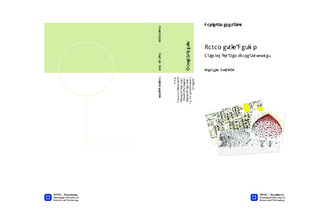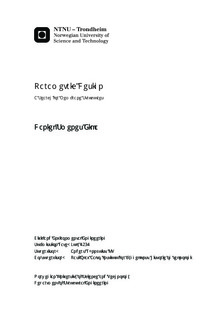| dc.contributor.advisor | Rönnquist, Anders | nb_NO |
| dc.contributor.advisor | Aalto, Pasi Olav | nb_NO |
| dc.contributor.author | Eika, Daniel Smenes | nb_NO |
| dc.date.accessioned | 2014-12-19T12:01:33Z | |
| dc.date.available | 2014-12-19T12:01:33Z | |
| dc.date.created | 2012-11-10 | nb_NO |
| dc.date.issued | 2012 | nb_NO |
| dc.identifier | 566951 | nb_NO |
| dc.identifier | ntnudaim:8380 | nb_NO |
| dc.identifier.uri | http://hdl.handle.net/11250/237120 | |
| dc.description.abstract | This report deals with shape optimization. Curved beams and thin shells are optimized with respect to internal bending moments. The shape optimization focuses solely on the shape of centroidal axes and middle surfaces, i.e. cross sections and shell thicknesses remain constant. The main part of the report is a presentation of three different cases, each with their own objectives. The scenarios are simplified and the criteria for success is internal bending moments alone; however, the methodology and the lessons learned are transferable also to other cases. 1. Curved beams in general. Optimum shapes are derived analytically for a variety of load cases and methods for estimating continuous optimum shapes are exhibited. Software which optimizes structures based on variations in the values of parameters is then applied. A brief study is done to get familiarized with approaches to the use of the software. Some of the shapes found analytically work as benchmarks. 2. An axisymmetric shell, the dome. Classical theories are studied for determining the internal bending moments of different dome shapes. After establishing the bending moments for a selection of shapes, the software is applied to accommodate the calculations and help determine what is the optimum one. An objective is to get familiarized with the assembling of 3 dimensional models within the software interface. 3. A double curvature shell. With the aid of the software, different suggestions are made to a hypothetical architect regarding the shape of the shell. The author derives an effective method for estimating optimum shapes for curved beams. He comes to the perception that analytical approaches might not outweigh the constructive benefits of alternative methods when the complexity of the cases increases. The software proves itself an invaluable tool for form finding; however, it does not offer the same accuracy and possibilities to intervene with the algorithm of the FEA solver as other software. The general understanding of the approaches tested is that independent points and points defined by an interpolation curve are successful and that parameters assigned some level of interdependence is less successful. Some suggestions for further work and possible improvements with regards to the process of structural optimization are presented at the end. These include mainly topology optimization, implementation of constructive measures (discrete) and how to best benefit from a conjunction of methods and types of software. | nb_NO |
| dc.language | eng | nb_NO |
| dc.publisher | Institutt for konstruksjonsteknikk | nb_NO |
| dc.subject | ntnudaim:8380 | no_NO |
| dc.subject | MTBYGG Bygg- og miljøteknikk | no_NO |
| dc.subject | Beregningsmekanikk | no_NO |
| dc.title | Parametric Design: A Search for Membrane Structures | nb_NO |
| dc.type | Master thesis | nb_NO |
| dc.source.pagenumber | 140 | nb_NO |
| dc.contributor.department | Norges teknisk-naturvitenskapelige universitet, Fakultet for ingeniørvitenskap og teknologi, Institutt for konstruksjonsteknikk | nb_NO |

